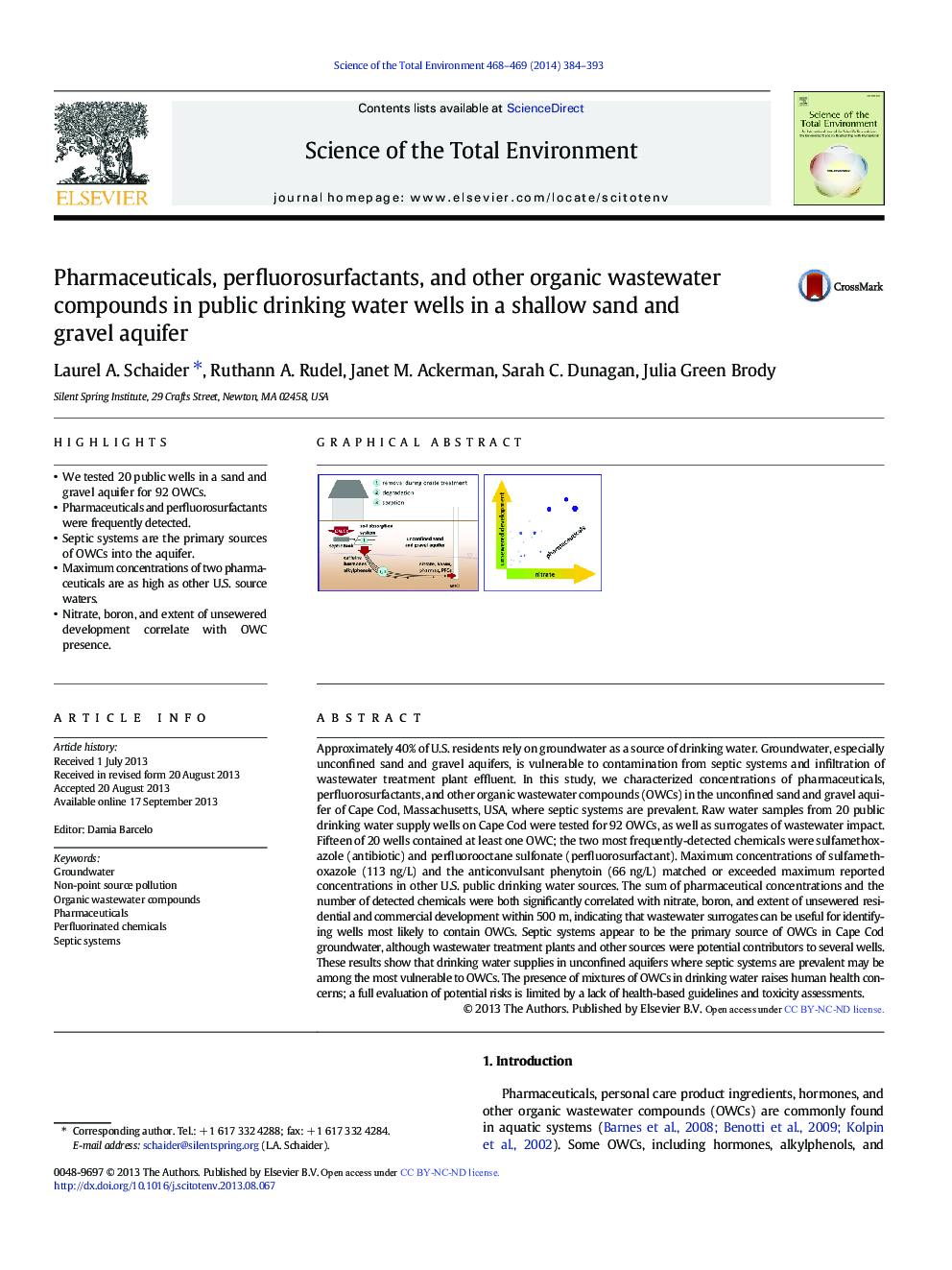| Article ID | Journal | Published Year | Pages | File Type |
|---|---|---|---|---|
| 6332491 | Science of The Total Environment | 2014 | 10 Pages |
â¢We tested 20 public wells in a sand and gravel aquifer for 92 OWCs.â¢Pharmaceuticals and perfluorosurfactants were frequently detected.â¢Septic systems are the primary sources of OWCs into the aquifer.â¢Maximum concentrations of two pharmaceuticals are as high as other U.S. source waters.â¢Nitrate, boron, and extent of unsewered development correlate with OWC presence.
Approximately 40% of U.S. residents rely on groundwater as a source of drinking water. Groundwater, especially unconfined sand and gravel aquifers, is vulnerable to contamination from septic systems and infiltration of wastewater treatment plant effluent. In this study, we characterized concentrations of pharmaceuticals, perfluorosurfactants, and other organic wastewater compounds (OWCs) in the unconfined sand and gravel aquifer of Cape Cod, Massachusetts, USA, where septic systems are prevalent. Raw water samples from 20 public drinking water supply wells on Cape Cod were tested for 92 OWCs, as well as surrogates of wastewater impact. Fifteen of 20 wells contained at least one OWC; the two most frequently-detected chemicals were sulfamethoxazole (antibiotic) and perfluorooctane sulfonate (perfluorosurfactant). Maximum concentrations of sulfamethoxazole (113Â ng/L) and the anticonvulsant phenytoin (66Â ng/L) matched or exceeded maximum reported concentrations in other U.S. public drinking water sources. The sum of pharmaceutical concentrations and the number of detected chemicals were both significantly correlated with nitrate, boron, and extent of unsewered residential and commercial development within 500Â m, indicating that wastewater surrogates can be useful for identifying wells most likely to contain OWCs. Septic systems appear to be the primary source of OWCs in Cape Cod groundwater, although wastewater treatment plants and other sources were potential contributors to several wells. These results show that drinking water supplies in unconfined aquifers where septic systems are prevalent may be among the most vulnerable to OWCs. The presence of mixtures of OWCs in drinking water raises human health concerns; a full evaluation of potential risks is limited by a lack of health-based guidelines and toxicity assessments.
Graphical abstractDownload full-size image
